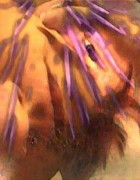The focus of scientific research, thus also our use of technological instruments, remove ‘the body from the equation’:
Or to watch it on YouTube directly.
I enjoyed this video, so am sharing it along with this addendum:
– These tests essentially take the concept of Free Will out of the equation, but not necessarily ‘the body’. Seems to me these observations implicate the brain ‘into’ the body as a whole schema – separating only cognitive awareness out from that schema. The latter is what we commonly refer to as “consciousness”. My view is that we over-emphasize the brain due, in part, to the religiously influenced view of the brain as seat of the soul. A left-over from European history and culture. I suspect this association lingers on because of our human experience of, and reliance upon, cognitive awareness. My theory is that we frequently confuse the two (the concept of consciousness and fact of cognitive awareness).
– The whole of a body has habits of Being a being thus – as one scientist in the video puts it – the ‘brain is constantly processing information from the senses’, which are also habitually sensing. These physiological habits (or functions, mechanisms, processes, etc) developed through countless individual experiences on a large time scale (the evolution of hominins). These intricate biological workings are not so readily undone just because the conditions of our environment has changed – not by the advent of digital technology, for example – as is exemplified by the tests performed in the video (the response to an image on a screen being as if an actual hammer was before him). The same is notable in reports of phantom limb syndrome, for example, or by our dependence on exposure to the sun. Neither a robotic prosthesis nor staring into the light-glare of a computer all day change our physiological workings (give it a wee more time, though!).
– The brain, as seen in the video, continues to do what it does while we sleep (and refers to the memory and sensations et al of awake life). Restricted, is the hibernating body, in the amount of activity and engagement with the surrounding environment. There is less information for the brain to process and synthesize. Which would well explain the detection of only limited activity in the brain. I wonder what they might see, if similar visualizations could be obtained of the whole body while being tested? The nervous system, for example, is ubiquitous and electrical currents might be read elsewhere (beyond the brain). Not to mention all the other full-body ‘systems’ that might be monitored.
– What if “consciousness” cannot be reduced to cognitive awareness, and thus is not housed exclusively in the brain? What if all living entities experience some kind of consciousness – whether complexly cognate (to one or another degree another) or not? It is, afterall, primarily the recognition of one’s own self-concept that we point to as distinguishing ourselves from other animals.
And what if a deeper bodily awareness could unveil much of that which we call ‘the sub-conscious’? This thing we dub ‘the sub-conscious’ is incredibly significant to who, and how, we define ourselves (Professor du Sautoy, the show’s host, is concerned with this question)… But this relates primarily to developmental experiences (our past, entwined with others and our surroundings).
Again (see this and this post), this is a shift in perspective that may prove fruitful. It may even help shed new light upon much of what Freud designated as the Id, ‘Ego’, and ‘SuperEgo’. But I’d have to go into child development theory in order to flush out my view on all that, which is a bigger project than I have time for right now. There will be posts relating to psychological theory, over the coming weeks, which may serve to piece my views on this together (for you, the reader).


